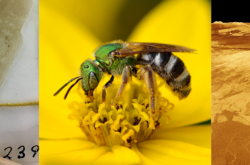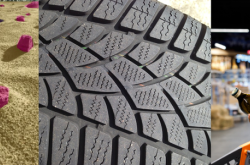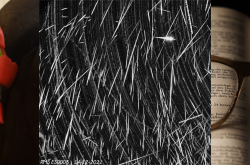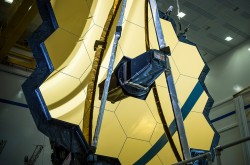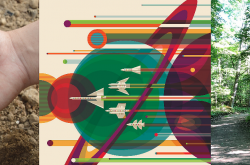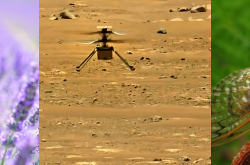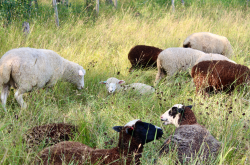3 things you should know about aquaponics, Jupiter’s largest moon, and butterflies

Meet Renée-Claude Goulet, Cassandra Marion, and Olivia Béchard.
They are Ingenium’s science advisors, providing expert scientific advice on key subjects relating to the Canada Agriculture and Food Museum, the Canada Aviation and Space Museum, and the Canada Science and Technology Museum.
In this colourful monthly blog series, Ingenium’s science advisors offer up quirky nuggets related to their areas of expertise. For the August edition, they examine aquaponics as a sustainable path to food production, Jupiter’s largest moon, Ganymede, and invasive versus at-risk butterfly species.
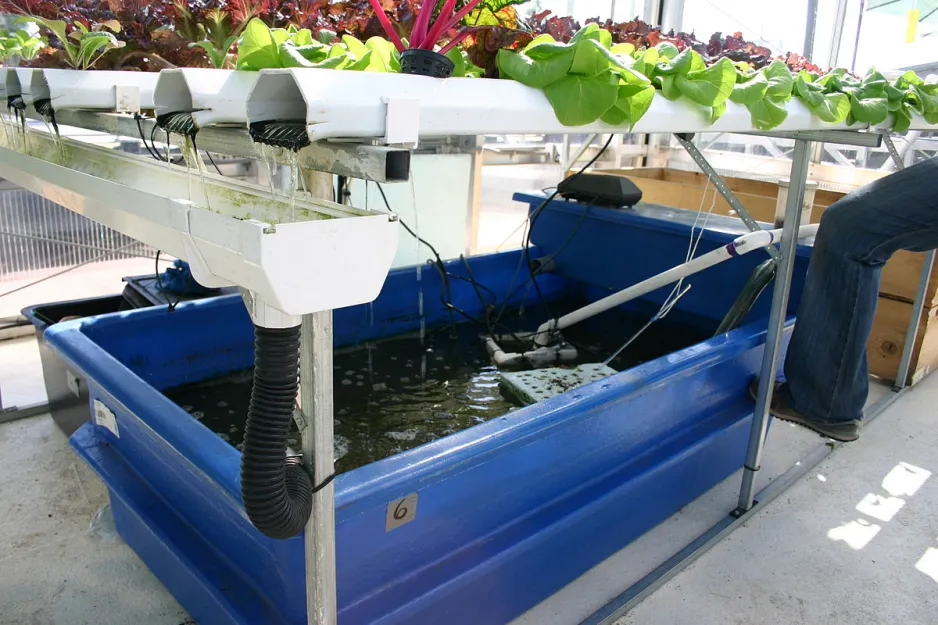
In this simple aquaponics system, biological wastes from catfish in the tank feed the leafy greens growing in the gutters above. Clean water circulates back into the tank.
Grow green: Aquaponics offers a sustainable path to food production
If you were to make a list of farm animals, fish would not likely be top of mind. Despite being a lesser-known form of food production, fish farming is practised around the world — and has been increasingly contributing to our food supply.
A recent iteration of fish aquaculture presents an exciting path to sustainability: aquaponics. This innovative systems approach to farming allows us to grow food closer to where people live, with little water and with a low environmental impact. On top of that, aquaponics are compact and don’t require agricultural land, making them a good fit for urban food production.
So what exactly is aquaponics?
Most people have heard of hydroponics: growing plants in a nutrient solution instead of in soil. Many of our fruits and vegetables — such as tomatoes, strawberries, and cucumbers — are grown this way in greenhouses. When you combine hydroponics with aquaculture, you get aquaponics, a closed-loop system to grow both fish and plants, simultaneously.
Aquaponics systems take many shapes and forms, with various levels of technological complexity. But all work with the same basic idea: humans feed the fish, fish feed the plants, and plants clean the water.
What goes in must go out, so when fish eat, they release ammonium — a nitrogen-rich waste. Then, in a two-step process, bacteria in the system convert the fish waste into nitrates, or plant food. This water is then pumped over to the plant roots. Plants drink up the nutrients from the fish tank water and use them to grow. Finally, the cleaned water can return to the tank.
Farms with more advanced systems claim they can make 100 per cent reuse of the fish waste, and that the only water loss is through the plants.
Not all fish and not all plants are suited to this, however. Tilapia and salmon are two types of fish typically raised in aquaponics. In terms of plants, it's mostly leafy greens, herbs, and other specialty crops.
Because of the hurdles to profitability of large-scale aquaponics, most farms currently operating have remained relatively small scale, and specialized. This said, the innovations and developments are constant, as more on-farm research is done, improving on what we know.
This is a great example of a way to move towards circularity in our food production. It prompts us to ask: which wastes are actually assets? How can we connect things together to be more efficient? With its great potential for producing more with less, aquaponics will surely be part of the diverse and sustainable food systems of tomorrow.
By: Renée-Claude Goulet
Jupiter’s largest moon, Ganymede: The view from Juno
Earlier this summer, NASA’s Juno spacecraft flew closer to Jupiter’s icy moon, Ganymede, than any spacecraft in more than two decades.
To date, Juno has made a variety of discoveries in orbit around Jupiter, such as water molecules at its equator, remarkable dawn aurora, lightning, and never before-seen views of roiling storms at Jupiter’s poles. Most recently, Juno completed its thirty-fourth fly-by of Jupiter, and flew just 1,038 km away from the largest of the Jovian moons, Ganymede. Watch a short NASA animation — set to music — which provides a “starship captain” point of view of each fly-by:
Transcript
*There are no words spoken in the video, only instrumental music in the background.
So, what makes Ganymede so special? As one of the planet’s four Galilean moons, there are two features that set Ganymede apart from its siblings Io, Europa, and Callisto: its size and its magnetic field. Measuring 5,268 km in diameter, Ganymede is the largest moon in the solar system — even larger than the planet Mercury.
Ganymede orbits within Jupiter’s powerful magnetic field, but it also generates its own magnetic field and displays auroras; it’s the only moon known to do so. Earth’s magnetic field is generated by the circulation of its warm liquid metal outer core, but Ganymede’s core should be too cool for the job. One supposition points to tidal forces, as there is a gravitational tug-of-war occurring between Jupiter and its large moons Ganymede, Europa, and Io, which causes frictional heating in the moons’ interior. The same mechanism is responsible for generating volcanic eruptions on Io, and may have prevented Ganymede’s core from cooling down millions of years ago.
Ganymede’s outer shell consists of hundreds of metres of rocky ice. The icy world’s surface is dominated by two terrains: a dark, older crater-rich terrain, and a bright, young terrain — consisting of extensive ridges (700 m high and thousands of kilometres long) and grooves — suggesting it may have been geologically active in the past. A study from the Hubble Space Telescope very recently reported evidence of water vapour sublimating from Ganymede’s icy crust. Beneath the moon’s icy crust, there may be a grand liquid water ocean, similar to that on Europa.
Scientists are now working through the recently collected data from Ganymede’s fly-by, so more discoveries are yet to come.
As part of NASA’s New Frontiers Program, Juno set out on a five-year journey to the Jovian system in 2011 — and has been orbiting the largest planet in our solar system since 2016. The Juno spacecraft’s mission to Jupiter has been extended to 2025 to further study Jupiter and its four Galilean moons.
Moreover, two new missions are planned to liftoff to the Jovian moons within the next few years. The NASA-led Europa Clipper and the ESA-led JUICE (Jupiter Icy moons Explorer) will characterize the frozen ocean worlds orbiting Jupiter, and investigate their potential for habitable environments.
By Cassandra Marion
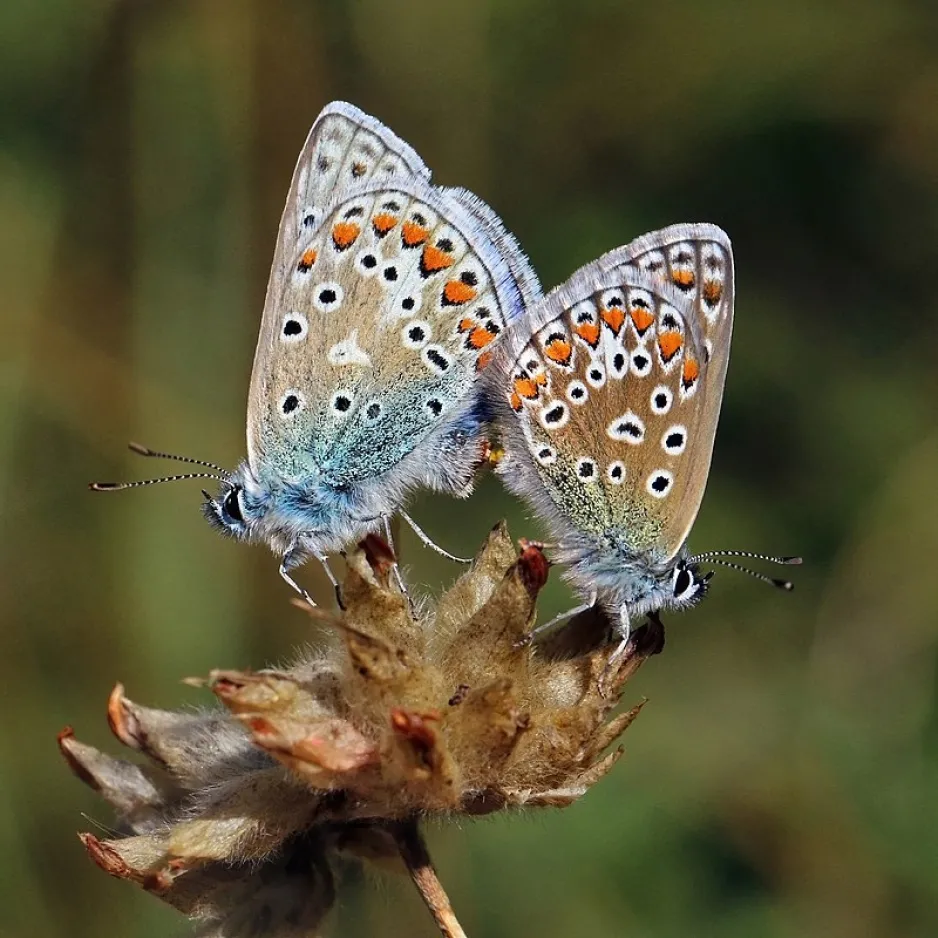
Common blue butterflies (Polyommatus icarus) mating, male (left) and female (right), in Yoesden Bank, Buckinghamshire.
Monitoring butterflies: Invasive vs. at-risk species
If you venture out on a hike in Ontario or Quebec this summer, you may glimpse an eye-catching, blue butterfly called the European Common Blue. First discovered near Montreal in 2005, the European Common Blue has since been reported in other areas of Quebec and in parts of Ontario.
While it’s lovely to look at, researchers at the University of Ottawa are now studying this non-native species to gain insights into how a potential invasion might progress. Caterpillars of this species consume Birds Foot Trefoil, which is found in urban areas in every Canadian province, suggesting that it’s not impossible for the European Common Blue to spread to other provinces, too.
So what makes a species invasive? Those that are considered to be invasive are widespread, abundant, and have negative effects on ecological communities. That being said, not all non-native species become invasive. In the case of the European Common Blue, the researchers felt that it was important to start studying this insect early — to better understand and predict if a newly introduced species is likely to become invasive.
Why do some species flourish while others are at risk of extinction? If we look at the Eastern Monarch as an example — a species that is native to Canada and another species of butterfly that has been making the news over the last few years — climate change has had significant impacts on both its population and its habitats. Specifically, cold weather led to a reduction in the population of the Eastern Monarch, along with human impacts on its habitat more generally. Environmental conditions can have huge impacts on whether a population thrives or perishes.
The good news is researchers have developed ways of monitoring each of these butterfly species. Both the European Common Blue and the Eastern Monarch are tagged to track their movements. With the help of the public and apps like iNaturalist and eButterfly, researchers have been able to document the range of the European Common Blue as part of citizen science projects. By understanding the movements of a species, scientists and researchers are better able to control populations by limiting or increasing the resources of those species. This type of research helps to inform interventions to prevent species from becoming invasive, or to protect species that are at risk of becoming endangered.
By Olivia Béchard








